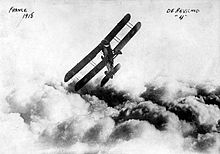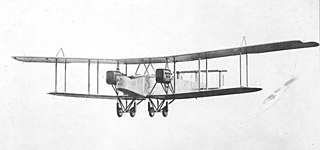
The Handley Page Type O was a biplane bomber used by Britain during the First World War. When built, the Type O was the largest aircraft that had been built in the UK and one of the largest in the world. There were two main variants, the Handley Page O/100 (H.P.11) and the Handley Page O/400 (H.P.12).
This is a list of aviation-related events from 1917.
This is a list of aviation-related events from 1918:
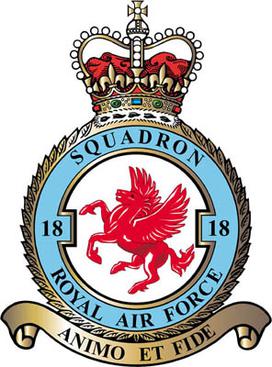
No. 18 Squadron of the Royal Air Force operates the Boeing Chinook from RAF Odiham. Owing to its heritage as a bomber squadron, it is also known as No. 18 (B) Squadron.
No. 118 Squadron was a squadron of the British Royal Air Force. Originally formed in 1918, it served as a fighter squadron in the Second World War, flying Spitfires and Mustangs. It flew jet fighters as part of RAF Germany in the 1950s, and Bristol Sycamore helicopters in Northern Ireland before finally disbanding in 1962.

The Airco DH.4 is a British two-seat biplane day bomber of the First World War. It was designed by Geoffrey de Havilland for Airco, and was the first British two-seat light day-bomber capable of defending itself.
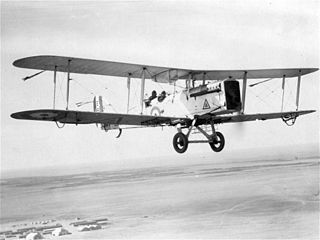
The Airco DH.9A is a British single-engined light bomber that was designed and first used shortly before the end of the First World War. It was a development of the unsuccessful Airco DH.9 bomber, featuring a strengthened structure and, crucially, replacing the under-powered and unreliable inline 6-cylinder Siddeley Puma engine of the DH.9 with the American V-12 Liberty engine.

The Airco DH.10 Amiens was a twin-engined heavy bomber designed and produced by the British aircraft manufacturer Airco. It performed the first nighttime air mail service in the world on 14-15 May 1919.
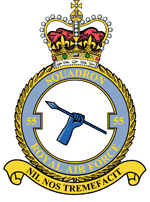
Number 55 Squadron was a flying squadron of the Royal Air Force (RAF). First formed in April 1917, the squadron saw action on the Western Front during the First World War. Based in the Middle East during the interwar period and the Second World War, No. 55 Squadron saw action over Iraq, Egypt, Libya and Italy. Between 1960 and 1993, the unit flew the Handley Page Victor. Initially on the Victor B.1A before becoming a tanker squadron in 1965 with the Victor B(K).1A/K.1/K.1A before converting to the Victor K.2 in 1975. Disbanding in October 1993, No. 55 Squadron were the last RAF unit to operate the Victor. Between 1996 and 2011, No. 55(Reserve) Squadron operated the Hawker Siddeley Dominie T.1 from RAF Cranwell, Lincolnshire, helping to train navigators for the RAF.
The Independent Air Force (IAF), also known as the Independent Force or the Independent Bombing Force and later known as the Inter-Allied Independent Air Force, was a First World War strategic bombing force which was part of Britain's Royal Air Force and was used to strike against German railways, aerodromes, and industrial centres without co-ordination with the Army or Navy.
RAF Narborough was a military aerodrome in Norfolk operated in the First World War. It opened on 28 May 1915, originally as a Royal Naval Air Station for RNAS Great Yarmouth tasked with defending against Zeppelin raids. The airfield covered a 908-acre (3.67 km2) site, including 30 acres (120,000 m2) of buildings – making it the largest First World War airfield in Britain. These buildings included seven large hangars, seven sheds, five workshops, two coal yards, two Sergeant's Messes, three Dope sheds and a Guardroom.
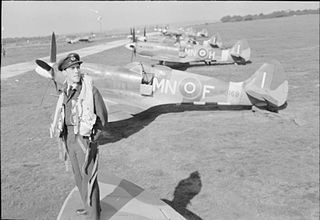
Royal Air Force Lympne or more simply RAF Lympne is a former Royal Air Force satellite station in Kent used during the First and Second World Wars. It was opened in 1916 by the Royal Flying Corps as an acceptance point for aircraft being delivered to, and returned from, France. It was later designated as a "First Class Landing Ground". In 1919, the airfield was turned over to civil use as Lympne Airport, serving until 1939 when it was requisitioned by the Fleet Air Arm as HMS Buzzard, later being renamed HMS Daedalus II.
No. 108 Squadron RAF was originally a squadron of the Royal Flying Corps during the First World War which continued to serve with the Royal Air Force in the Second World War.

No. 223 Squadron RAF was a squadron of the Royal Air Force. Originally formed as part of the Royal Naval Air Service (RNAS), the Squadron flew in both World Wars.
No. 144 Squadron RAF was a squadron of the British Royal Air Force. It was first formed in 1918 during the First World War, operating as a bomber squadron in the Middle East. It reformed in 1937, serving in the bomber and anti-shipping roles during the Second World War. A third incarnation saw the squadron serving as a strategic missile squadron during the late 1950s and early 1960s.
No. 107 Squadron RAF was a Royal Flying Corps bomber unit formed during the First World War. It was reformed in the Royal Air Force during the Second World War and was operational during the Cold War on Thor Intermediate Range Ballistic Missiles.
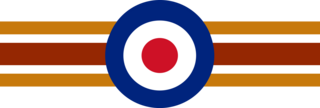
Number 125 (Newfoundland) Squadron was a Royal Air Force squadron active during World War II and briefly in the mid-1950s. Throughout its service the squadron primarily operated night fighters.

The 28th Aero Squadron was a United States Army Air Service unit that fought on the Western Front during World War I.
The 1st Provisional Air Brigade was a temporary unit of the United States Army Air Service, commanded by Col. Billy Mitchell, operating out of Langley Field, Virginia, that was used in Project B to demonstrate the vulnerability of ships to aerial attack when, in July 1921, the "unsinkable" German dreadnought SMS Ostfriesland was sent to the bottom of the Atlantic Ocean by bombardment. Other targets included the German destroyer SMS G-102, the SMS Frankfurt, and the USS Iowa.
A day bomber is a bomber aircraft designed specifically for bombing missions in daylight. The term is now mostly of historical significance, because aircraft suited to both day and night bombing missions have become more and more prominent.
